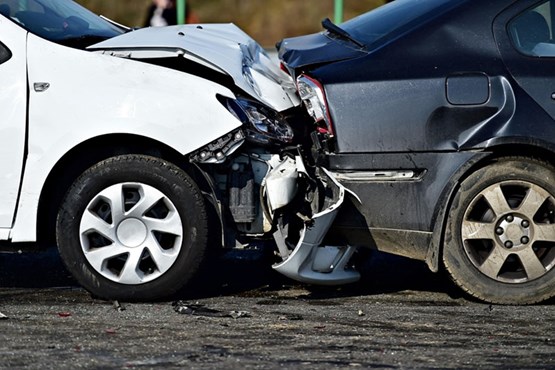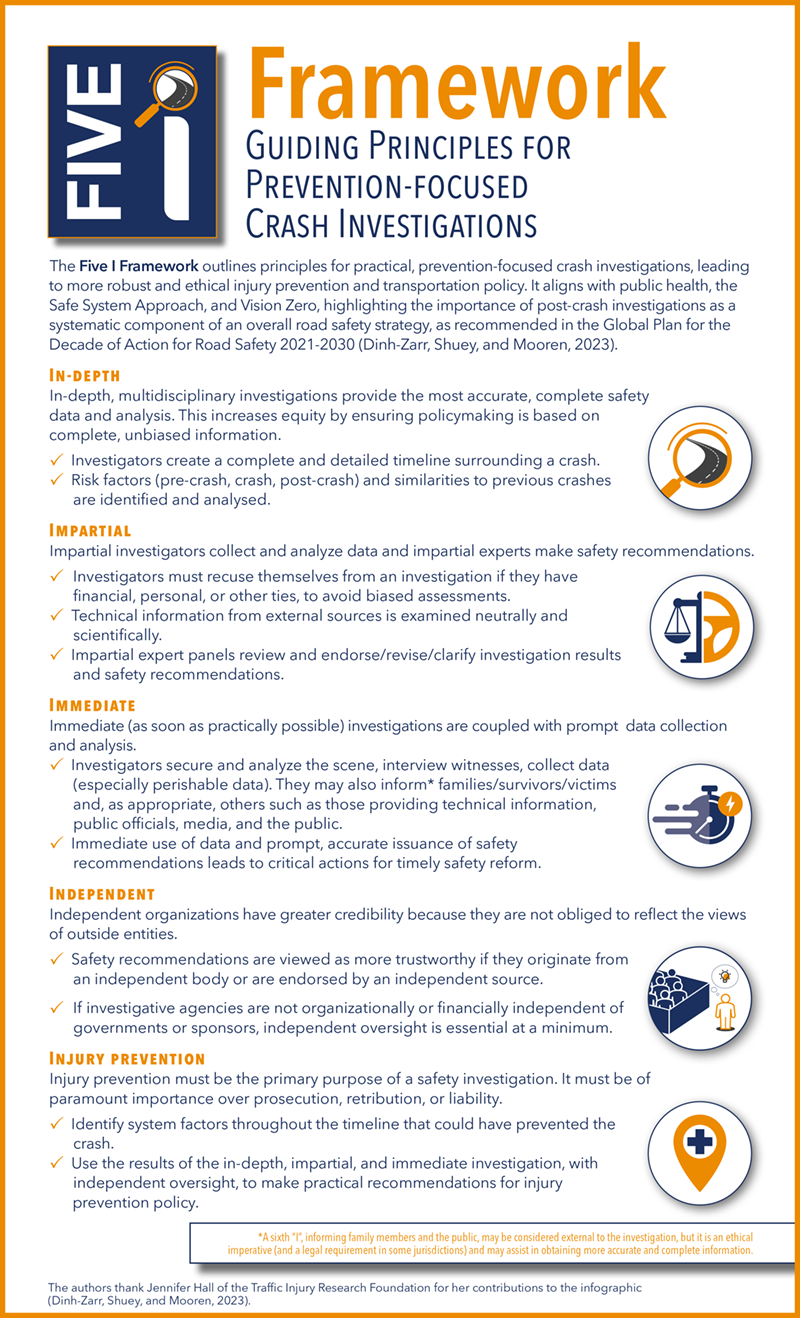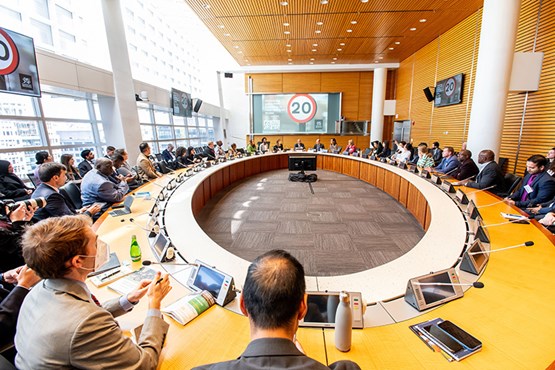Five I Framework for Prevention-Focused Crash Investigations

A new framework for prevention-focused investigations has been proposed in a peer-reviewed paper supported by the FIA Foundation and the Canadian Traffic Injury Research Foundation (TIRF).
Published in a special issue of the peer-reviewed scientific journal Accident Analysis & Prevention, “The Five I Framework of Crash Investigation: Linking Investigation Practices to Safety Reform” was authored by Dr. Bella Dinh-Zarr (a senior advisor to the FIA Foundation and TIRF), Dr. Ray Shuey, and Dr. Lori Mooren. The authors examined best practices of multimodal crash investigation agencies around the world and created a practical and pro-active approach to crash investigation based on the prevention and systems-oriented philosophies found in public health, Vision Zero, and the Safe System Approach. The Five I Framework is intended to guide governments and investigative agencies in conducting crash investigations that will result in safety recommendations for injury prevention and road safety advancements.
Dr. Dinh-Zarr, who is a former Acting Chairman of the U.S. National Transportation Safety Board (NTSB), commented “As we approach the midpoint of the Decade of Action, the Five I Framework is a tool that can help us better determine the cause of crashes and, more importantly, to help us uncover all the ways to prevent crashes, deaths, and injuries.” She added, “At the NTSB, people who lost loved ones in a transportation disaster, or had been injured themselves, asked me what I was going to do to stop others from suffering the same tragedy. I hope the Five I Framework can be a practical first step towards answering that question.”

The Five I Framework provides five guiding characteristics for crash investigations: Immediate, In-Depth, Impartial, Independent, and Injury Prevention. Each “I” defines a vital component for crash investigations which, together, lead investigators to countermeasures that involve collective action and systems change, resulting in greater advances in road safety. For example, the first “I” stands for “In-Depth” and calls for in-depth, multidisciplinary investigations that provide the most accurate and complete safety data and analysis with complete timelines and taking into account pre-crash, crash, and post-crash risk factors. Another “I” is “Independent” which stresses the critical need for independent oversight, if complete financial and organizational independence is not possible. Each of the Five “I”s is described in greater detail in the paper as well as by the infographic (see illustration). Together, the Five “I”s form a framework that leads investigators to an array of countermeasures that involve systems change and thus, more effective road safety reform.
In addition to the Five I characteristics, the authors include a sixth “I”, “informing” which is the responsibility of investigators to inform family members, officials, media, and the public, especially those in a community who have been affected by the crash. Although it is not part of the technical investigation itself, this additional “I” underscores the importance and ethical duty of investigators to communicate, especially with family members, which also may lead to a better investigation and better compliance with safety recommendations.
The primacy of prevention is a foundational philosophy of the Five I Framework. The authors urge officials, practitioners, and advocates to ensure that the primary purpose of crash investigations is always prevention, rather than compensation, prosecution, or retribution, as is still the goal in some jurisdictions. “Decision-makers and practitioners must constantly be attuned to the question ‘How can the risk of a crash of this nature be prevented in the future?’” commented Dr. Shuey, adding “A focus on prevention strategies will ensure safer drivers, safer roads, and safer vehicles, leading to a “safety culture” for all.”
A systems approach to improving safety is another foundation of the Five I Framework. Dr. Mooren said, “We need to understand that the incursion of road injury is a system process. Only then can we understand how we intervene in the most effective ways to prevent injury and death.” With the renewed focus on the Safe System Approach worldwide, the Five I Framework is a practical tool that communities can use to guide their crash investigations – and advocate for evidence-based countermeasures -- to accomplish the ultimate goal of saving lives.
Full Text Available Free Online Until December 3, 2023. In print January 2024.
Dinh-Zarr, Shuey R, & Mooren L. “The Five I Framework of Crash Investigation: Linking Investigation Practices to Safety Reform.” Accident Analysis & Prevention 194, January 2024.



